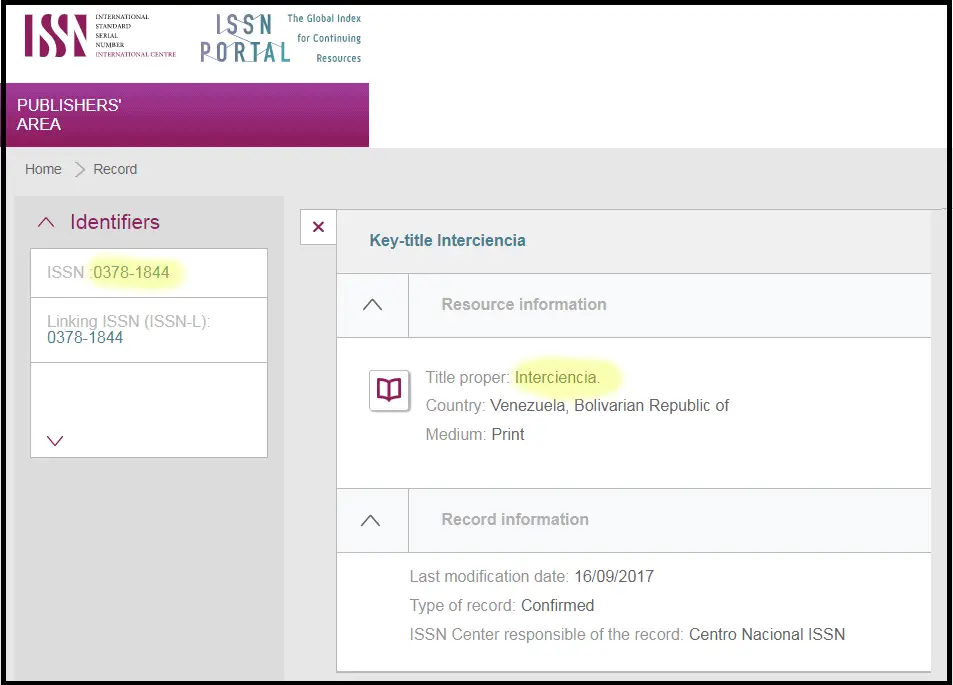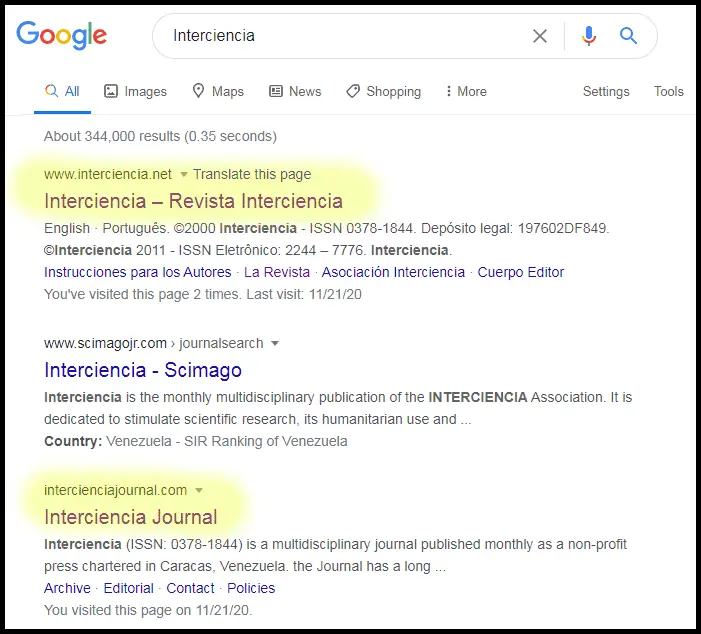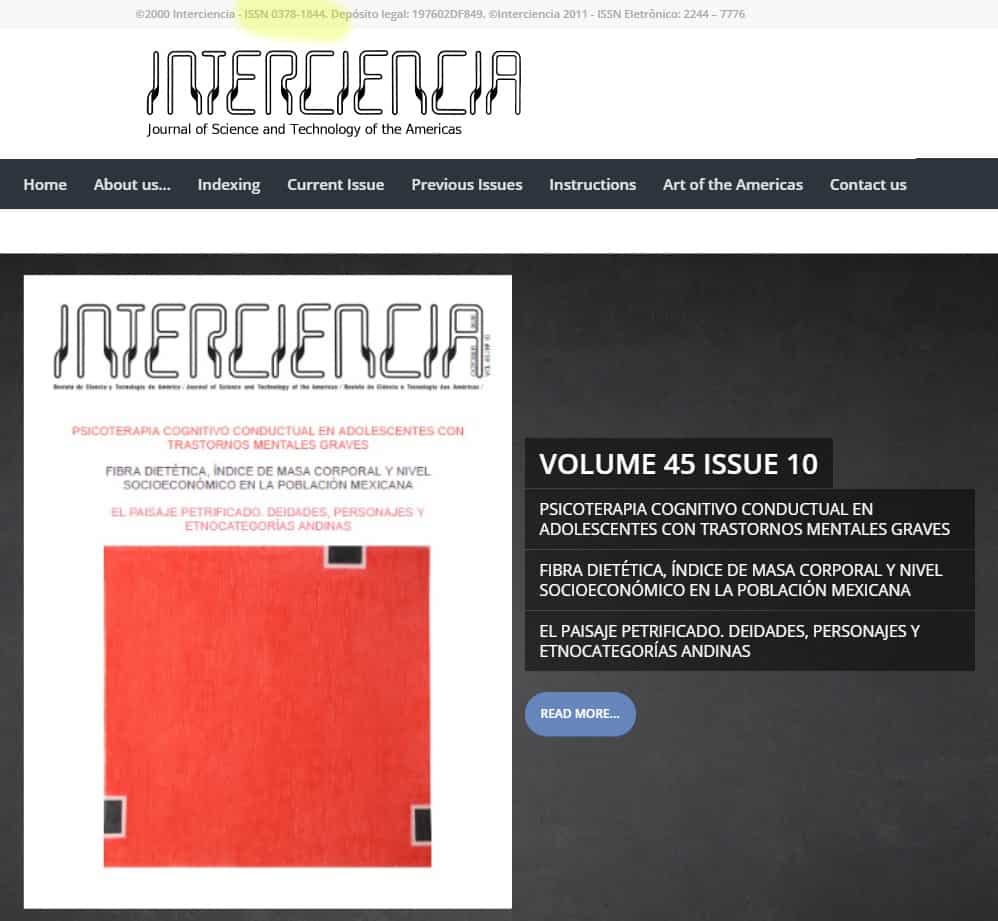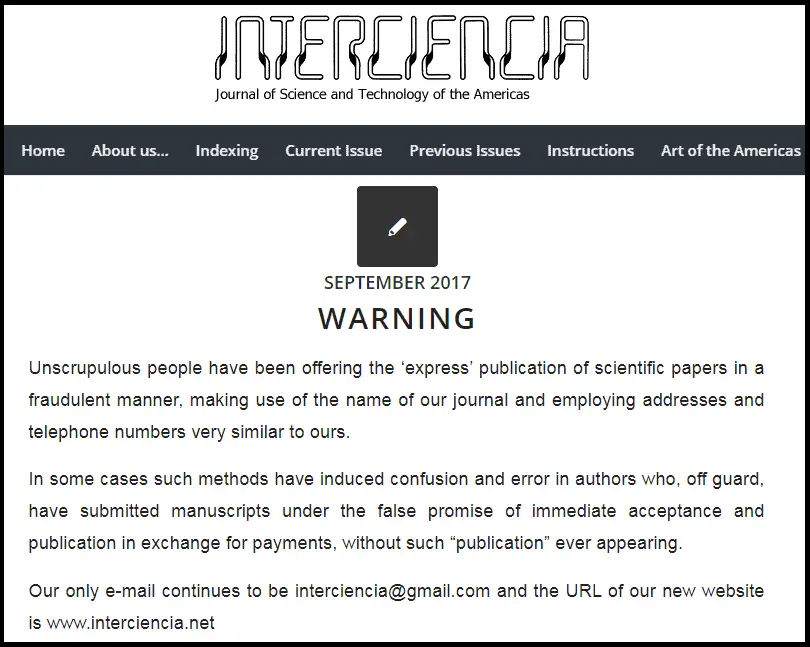We were recently contacted via a direct message on Twitter which asked if a particular journal was a fake journal. This was an intriguing question and one which we felt we had to answer, or least look at to see if we could offer advice.
In this article, we document the process we went through to answer this question, using the journal in question as a case study.
How to spot a fake journal?
- Check the journal name very carefully. The fake journal may have very subtle differences to the journal they are impersonating. They may even have the same name, which is just another element that you will need to investigate.
- Check the URL of the journal. Does it agree with what you might expect to see.
- Look at the journal’s home page and investigate all the claims that they make with regard to membership (such as DOAJ and COPE), impact factors and whether they are listed in bibliographic databases such as Scopus and Clarivate.
- Do not just rely on the ISSN, as the fake journal may be using the ISSN of the legitimate journal and all the checks you make will validate the journal as legitimate.
- Check the journal’s web site, editorial board, previous papers, open access policy etc. Does it look like a legitimate journal?
- Try to track down the journal that it is impersonating. This will be your strongest evidence as you can then compare the two.
At first it may seem daunting to try and establish whether a journal is fake, but you only need to find one thing and that will lead to other things and the body of evidence will quickly build up.
In this article, we provide a case study which documents our investigation. Every investigation will be different, but we hope this article provides some ideas as to how you can carry out your own investigation.
Like predatory journals, if you have any doubts, just move onto the next journal. The scientific world is not short of journals that you can submit to.
We will keep the identify of the person who asked the original question confidential (it was a private direct message after all), but will send a link of this article to the person that asked the question by way of a response, which we hope they find useful.
What is a fake journal?
It is important that we understand what we mean by a fake journal, at least for the purposes of this article.
A fake journal represents itself as another journal in the hope that it can get researchers to submit to this fake journal, rather than the researcher submitting their research to the legitimate journal. Invariably they will want to charge for publishing your article, even if the legitimate journal it is impersonating does not have an Article Processing Charge (APC).
Fake journals are different to predatory journals. Predatory journals use the open access model of publishing but have little (or no) peer review, and will accept most (if not all) papers. Fake journals take this one stage further. They are predatory, but also leverage on the good name and reputation of a legitimate journal.
Predatory journals, as are fake journals, are primarily motivated by financial gains. They have no interest in ensuring that the integrity of the scientific archive is maintained.
If you want to read more about this topic, the following articles may be of interest:
- What is Predatory Publishing? | … and should you care?
- Do predatory publishers respect the scientific archive?
- Three quick ways to spot a predatory journal
What started the investigation?
As mentioned in the introductory remarks, we received a Twiter direct message which said:
“Hello
Thanks for all your efforts for ridding Scientific Research and Publications from Predatory/fake Journals. Could you please check if the Journal Interciencia Journal is a fake Journal or not?
I have already published a paper with them in [redacted] and I did not yet find it in Google Search.
Regards“
We have redacted the date that the author had published a paper, to further protect their identity.
Initial investigation
Our aim is to ascertain whether Interciencia Journal is a fake journal, or not. First of all we looked through various metrics, organisations – just to see if the journal was listed and recognized by them.
- Search for the journal
As you might expect the first thing we did was to search for the journal. The first entry in the search results was a link to a journal, with a URL of http://www.intercienciajournal.com/, which led to the home page shown in Figure 1.

From this home page we note that (see the blue highlights):
- The journal has an ISSN (0378-1844).
- It says that some of the source data comes from “Thomson Reuters Citation Data“. This is encouraging.
- It says it is indexed in the “Science Citation Index Expanded“. This is good to see.
- It says it is indexed in Scopus, again good to see.
- It says that is has been evaluated by the Directory of Open Access Journals. Not sure what “been evaluated” means.
- It has a link to the Thomson Reuters ISI Index page. This is a good sign
This what we would expect to see for a high quality, open access journal. So let’s take a closer look at these some of these to verify them.
- ISSN
If you want to read more about ISSN’s, take a look at our article “What is an ISSN (International Standard Serial Number)?” where we go into more depth about what they are.
Whether a journal has an ISSN, or not, is no indicator of quality but the ISSN can be used to find out about the journal, as it it is a unique identifier.
Figure 2 shows the result returned from the ISSN portal.

This looks good. At least the ISSN is valid and we can use it in other searches, knowing that the ISSN is recognised.
- Directory of Open Access Journals (DOAJ)
The Directory of Open Access Journals maintains a list (via a membership scheme) of legitimate open access journals. If you want to know more about DOAJ, take a look at the article we we wrote on this organisation.
Using the ISSN (0378-1844), it is easy to find out of a journal is a member of DOAJ. Figure 3 shows the result.

The search returned three results, but these are all articles. The expected journal is not returned. This is a red flag, which deserves further investigation. It is not necessarily bad, but it is something to be noted, especially as the journals says that it has been evaluated by DOAJ.
- Committee on Publications Effort (COPE)
COPE is an organisation that journals can join, committing them to uphold certain ethical standards with regard to scientific publishing.
Although Interciencia Journal does not claim to be a member of COPE it is often a check we make. If it turns out to be a member, that is a positive. It is not necessarily a negative if it is not a member, but it is worth the ten seconds it takes to check.
Figure 4 shows the result of the search.

The result of the search show that ISSN 0378-1844 is not a member of COPE.
- Thomson Reuters (ISI)
One of the claims made by Interciencia Journal is that it is indexed by ISI. If you look at Figure 1, you can see where this claim is made. The highlighted area (bottom right of Figure 1) is a clickable URL. If you follow this link, it leads to the screen shown in Figure 5.

This leads to the Clarivate web site (which is what we would expect) and the ISSN/journal appears. This looks good.
As a secondary check, we also searched Web of Science, from outside of the Interciencia Journal web site and saw the information shown in Figure 6. This confirms that the journal is recognised by Web of Science.
Moreover, it has an impact factor of 0.448 and, for those of you who are interested in these things it has been indexed since 1997 (across two different categories), ranking as Q3 or Q4. Since 2008, when it transferred from the “Multidisciplinary Sciences” category to the “Ecology” category, it has always been Q4 (at least up to 2019, which is the latest figures available when we chanced on 25 Nov 2020).

- Scopus
Figure 1 shows that Interciencia Journal is indexed by Scopus. There is no link on the journal’s home page, but it is easy to check whether it is a Scopus recognised journal or not.
We logged into Scopus and searched for the journal. The result is shown in Figure 7.

This confirms that 0378-1844 is recognised by Scopus.
What does this tell us?
After this initial investigation, what do we know.
- The ISSN is a valid ISSN and is recognised by the body which looks after ISSN.
- The journal is not registered with either DOAJ or COPE
- The journal is recognised by Thomson Reuters (Web of Science, ISI or Clarivate; or however you refer to it).
- The journal is recognised by Scopus
Given that the journal is recognised by ISI and Scopus, we can forgive it not being a member of DOAJ or COPE and this profile would certainly suggest that we are looking at a legitimate journal and we can go ahead and submit our research paper.
But, and there is a big but ….
The Journal Name
So far we have focussed on the ISSN, as this is a unique identifier and it enables us to check on website sites such as DOAJ, COPE and Scopus a lot more easily that typing the journal name in.
But what about the journal name? We are looking at a journal called Interciencia Journal, but if you look at Figure 2 (ISSN), Figure 5 (Web of Science), Figure 6 (Web of Science) and Figure 7 (Scopus) you might have noticed that the journal name is given as Interciencia. The “Journal” is “missing“.
Is this something we should be concerned about? After all, if somebody told you that the journal was called Interciencia, it would seem reasonable to search for “Interciencia Journal”.
Searching for Interciencia
Rather than searching for “Interciencia Journal“, we searched for “Interciencia“. Figure 8 shows the search page that was returned.

When we searched before (for “Interciencia Journal“), the third entry in Figure 8 appeared at the top of the list. When we search for “Interciencia” (without Journal) that entry is now third in the list and there is a new item as the first entry.
The first item has a URL of https://www.interciencia.net/, and the third entry has a URL of https://intercienciajournal.com/.
Both of these links lead to journals with an ISSN of 0378-1844. You can see this in Figure 1, and Figure 9 shows the page that https://www.interciencia.net/ leads to. We have highlighted the ISSN (0378-1844) shown at the top of the page.

This is a worry as we have found two different home pages, which are using the same ISSN.
Interciencia versus Interciencia Journal
We are now in a position where we have two journals that have (or at least claim to have) the same ISSN. Which journal is the correct one, and which one is the fake one.
The name is the giveaway. One agrees with Scopus, Thomson Reuters and the ISSN portal. That is, Interciencia WITHOUT “Journal”, is the legitimate journal. Interciencia Journal is a fake journal.
Just to be absolutely clear, Interciencia is a legitimate journal and Interciencia Journal is a fake journal, trying to leverage off the success of the legitimate journal.
Observations
Now that we have established that there are two journals with the same ISSN, but one of them is fake, what else can we say?
We make the following observations, noting that this is related to just these two journals. As we say above, any investigation that you carry out will be different but we hope that our observations will give you some idea of areas that you may want to look at.
- We have already commented on the Interciencia Journal home page. Most of its information is leveraging on ISSN 0378-1844.
What we have found about ISSN 0378-1844 is largely correct, with the exception of having any association with DOAJ, although it did only say that it was being “evaluated“, not that it was a member of DOAJ.
The key point is that Interciencia Journal is not the journal that has an ISSN of 0378-1844. This ISSN belongs to another, legitimate journal, with a very similar name. - Looking at the “Policies” page for Interciencia Journal (we have provided it here if you want to see it), it states “All papers will be double blind peer reviewed by 2-3 expert reviewers with 2 weeks from the submission time.” In line with many predatory journals, one thing they offer is fast review (and publication) times.
Note: we have not shown some images on this page, but have provided a link to them. This is an attempt to not “clutter up” up this page but to still make the images accessible to those that would like to see them. - Both journals are publishing volume 45 in 2020. In the case of Interciencia Journal you can only access the archive back to 2012 (Volume 37). Strangely Interciencia only goes back to 2009 (Volume 34). We are unsure why you cannot access back to Volume 1?
Here are the screenshots of the relevant pages.
Archive for Interciencia (taken 22 Nov 2020)
Archive for Interciencia Journal (taken 22 Nov 2020) - If you are still not convinced that they are different journals, take a look at the papers published in (say) Volume 45 Issue 10. The paper titles for both journals are totally different.
- When we tried to access the papers, the papers in Interciencia are freely available, but Interciencia Journal asks for 2,000 USD to access all of their content (here is a screenshot of the web page).
If you click on this link you are taken to a Knowledge Insights web page, where you can make payment (a screenshot is available here). We have had a quick look at Knowledge Insights. It was not on the original Beall’s List, but is now (22 Nov 2020), marked as “may be predatory“. See https://beallslist.net/ (accessed 22 Nov 2020). - When you look at the papers on Interciencia Journal, you are unable to see who the authors are (unless, we assume, you pay US$ 2,000 and access the full paper). This is not necessarily bad, but is a little strange.
We would like to have checked whether the the paper had been published by the person who contacted us. You might recall, they said “As I have already published a paper with them in [Redacted] and I did not yet find it in Google Search !!!” We don’t have access to the author name, or the paper title, so we are unable to check whether it has actually been published. - The editorial boards of both journals are different. Just so that we have it recorded, here is the editorial board of Interciencia and Interciencia Journal.
- If you look at some of text describing the journals, you will find this on Interciencia Journal (screenshot here) web site:
“The journal is dedicated to stimulating scientific and technological research, to its humane use and to the study of the social context in which scientific and technological development occur.“
If you look at the web pages of Interciencia, you will find the following text (screenshot here)
“It is dedicated to stimulate scientific research, its humanitarian use and the study of its social context, specially in Latin America and the Caribbean and to promote communication between the scientific and technological communities of the Americas.“
The two pieces of text are different but you cannot help but notice the similarities. - Interciencia Journal does not provide any information about its Article Processing Charges (APC) but we were informed by the person that originally contacted us that they were required to pay a fee. They were unwilling to tell us how much.
Bear in mind that readers also have to pay (US$ 2,000) – see point 6 above.
Interciencia is an open access journal and charges US$225 per published page, as well as offering some concessions. See the screenshot here.
What does Interciencia have to say?
Looking at the legitimate journal’s web site they are aware that others are making use of their name. Figure 10 shows a screenshot from their web site warning of unscrupulous practices.
Note that this is dated 2017, so they have recognized the problem for a number of years.

Conclusion
What started off as a simple question led us down a path of discovery. We quickly came to the conclusion that Interciencia Journal was a fake journal, giving it a very similar name to another journal and publishing statistics on its web site which, although true, are related to an ISSN that belongs to the legitimate journal.
The choice of journal name is also part of the con. If you know that the journal is called Interciencia you are quite likely to search for “Interciencia Journal“. However, by doing so, this shows the fake journal at the top of the search results.
There were some warning signs that the authors might have looked for. They could have verified the journal through Thomson Reuters and Scopus, paying special attention to the journal name. They might have also looked at the web site, which looks a little cumbersome and amateurish.
When they received a demand for payment, this should have raised a red flag, as there is nothing on the web site to say that the journal is open access and will charge a publication fee.
It is always useful to look at some of the papers that have been published which does not seem possible for Intercencia Journal, unless you pay $US 2,000, which goes against the principles of open access.
So, the clues were there, but it is so easy to get conned that we can only feel sorry for the authors and we hope that this article helps others not to suffer the same fate.
Acknowledgments
- We would like to than the person who raised this issue with us. We have said that we will not publish their name, but we owe a debt of thanks nonetheless.
- Header image: https://www.pxfuel.com/en/free-photo-qztso


